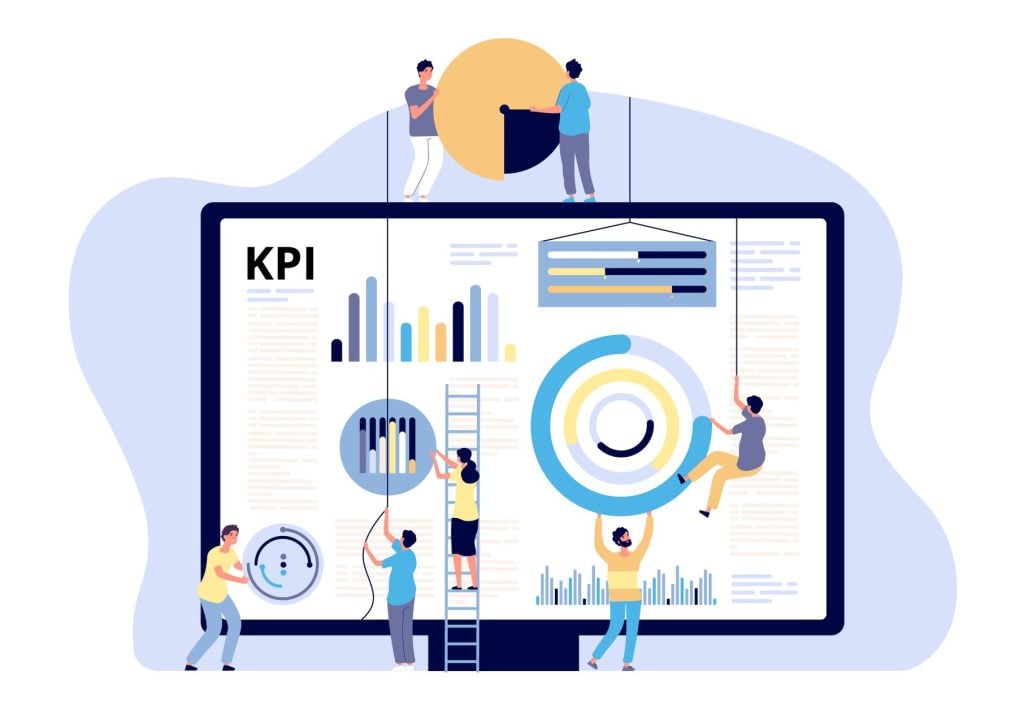Introduction
Key Performance Indicators (KPIs) are critical to the success of any business, and this is especially true in 2023. In today’s fast-paced and constantly changing business environment, it’s more important than ever to track and monitor KPIs to ensure your business stays on track and reaches its goals.
As businesses continue to grow and evolve, it is crucial to track and monitor the performance of key processes such as Accounts Payable (AP). By using KPIs, businesses can gain valuable insights into the efficiency and effectiveness of their AP process and make informed decisions to improve it. In this blog post, we’ll explore what KPIs are important to track and the reasons why you should be tracking them in 2023.

Recomnended KPIs to Track
- Invoice processing time: This KPI measures the time it takes for an invoice to be received, processed, and paid. By reducing invoice processing time, businesses can increase the efficiency of their AP process and improve vendor relationships. A shorter invoice processing time means vendors will receive payment sooner, which can lead to better supplier relationships, and potentially more favorable terms and discounts in the future.
- Payment accuracy: This KPI measures the percentage of invoices that are paid correctly, without errors or discrepancies. By maintaining a high payment accuracy rate, businesses can prevent disputes with vendors and ensure timely payments. It also helps to ensure that vendor invoices are paid on time, which can improve supplier relations and reduce the risk of penalties or late fees.
- Vendor invoice aging: This KPI measures the time it takes for invoices to be paid. By reducing vendor invoice aging, businesses can improve the efficiency of their AP process and maintain good vendor relationships. Vendors will appreciate timely payments, which can lead to more favorable terms and discounts in the future.
- Matching rate: This KPI measures the percentage of invoices that are correctly matched to purchase orders or receiving reports. By increasing the matching rate, businesses can prevent errors and ensure that invoices are processed correctly. This helps to ensure that the correct goods or services have been received and invoiced, reducing the risk of errors and disputes.
- Early-payment discount capture: This KPI measures the number of invoices that are paid early to take advantage of early-payment discounts. By increasing the early-payment discount capture rate, businesses can lower the overall cost of goods and services. This can have a significant impact on the bottom line of a business, as even small savings on a large number of invoices can add up to significant cost savings.
- Automation rate: This KPI measures the percentage of invoices and payments that are processed automatically using AP automation software. By increasing the automation rate, businesses can reduce errors, save time, and increase efficiency. Automating the AP process can help to ensure that invoices are processed and paid on time, reducing the risk of errors and disputes.
- Audit rate: This KPI measures the percentage of invoices that are audited to ensure accuracy and compliance. By increasing the audit rate, businesses can prevent errors and ensure that invoices are processed correctly. This helps to ensure that invoices are accurate and compliant, reducing the risk of errors and disputes.
- Cost of processing: This KPI measures the cost of processing each invoice. By reducing the cost of processing, businesses can increase the efficiency and cost-effectiveness of their AP process. Reducing the cost of processing invoices can help to improve the bottom line of a business, as even small savings on a large number of invoices can add up to significant cost savings.

Why Track KPIs?
- Better decision making: KPIs provide valuable insights into your business performance, which can help you make informed decisions that drive success. By tracking KPIs, you can identify areas where you’re succeeding and areas where you need to improve, which can help you make changes that positively impact your bottom line.
- Improved efficiency: By tracking KPIs, you can identify areas where your processes are inefficient, which can help you make changes that improve efficiency and reduce costs.
- Increased visibility: KPIs provide valuable insights into your business performance, which can help you identify trends and make decisions that drive success. This increased visibility can also help you better understand your customers and respond to their needs more effectively.
- Better alignment with business goals: KPIs help you measure progress towards your business goals, which can help you stay on track and ensure that your efforts are aligned with your objectives.
- Improved collaboration: By tracking KPIs, you can improve collaboration and communication within your team. This, in turn, can help you identify areas where you need to work together more effectively, which can help you achieve better results and reach your goals more quickly.
It’s important to note that the best KPIs for your business will depend on the specific goals and needs of your organization. The mentioned KPIs are a good starting point, but you may need to add or remove some of them to suit your specific situation. By tracking and monitoring these KPIs, businesses can gain valuable insights into theirAP process and make informed decisions to improve it. However, it is important to not just track these KPIs, but also analyze them and use the insights gained to make improvements to your process. For example, if you find that your invoice processing time is longer than you would like, you can take steps to improve it by streamlining your process, implementing automation, or training your team to process invoices more efficiently.
Another important aspect to consider when monitoring your AP KPIs is to set targets and track progress towards them. This can help you to identify areas where you need to make improvements and measure the impact of any changes you make. Additionally, it is important to regularly review and update your KPIs to ensure that they are still relevant and aligned with your current business goals.
Implementing a robust AP process is a key component of financial management and can have a significant impact on the success and growth of your business. By monitoring and analyzing key performance indicators, you can gain valuable insights into your AP process and make informed decisions to improve it. By setting targets and tracking progress, you can ensure that you are continually working towards a more efficient and cost-effective AP process.
In Summary
In conclusion, in 2023, tracking the performance of your Accounts Payable process is crucial for the success and growth of your business. By monitoring key performance indicators (KPIs) such as invoice processing time, payment accuracy, vendor invoice aging, matching rate, early-payment discount capture, automation rate, audit rate and cost of processing, businesses can gain valuable insights into the efficiency and effectiveness of their AP process and make informed decisions to improve it. It is important to note that the best KPIs for your business will depend on the specific goals and needs of your organization and to regularly review and update your KPIs to ensure that they are still relevant and aligned with your current business goals.
Interested in learning more about EZ Cloud’s pre-built, user-specific dashboard offerings to track KPIs? Contact us today.




